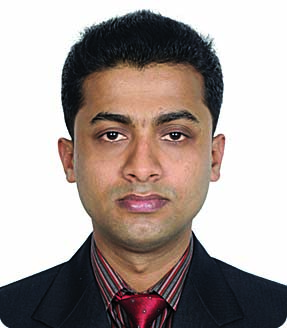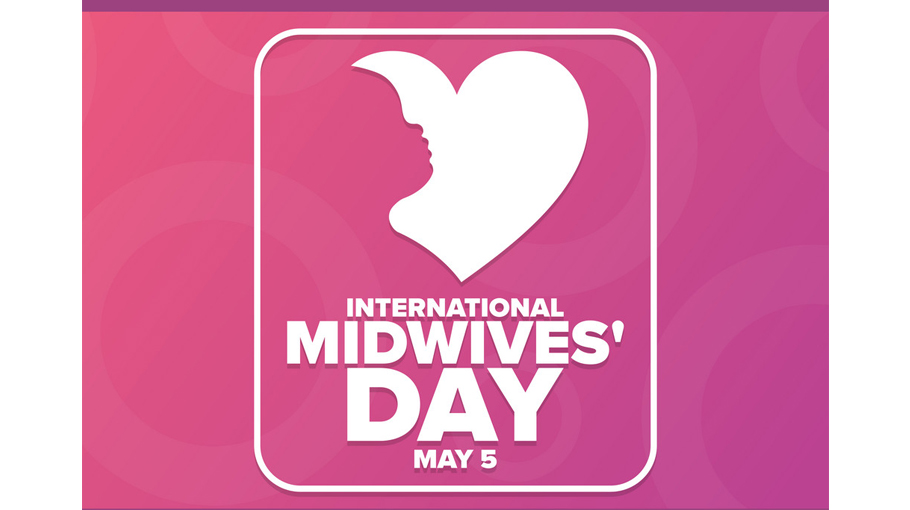Midwives ‘essential part’ of childbirth
International Day of the Midwife celebrated

Roufun Naher can still remember the difficulties she faced introducing breastfeeding to her first child within an hour of birth four years ago.
“I was at the post-operative after the caesarean section. Naturally I couldn’t move after the operation. It was my first child. I was not experienced and there was no professional support, nurses did not cooperate ...so breastfeeding was too tough for my baby,” she recalled.
‘Since there was no support, the baby was not comfortable, he was not sucking properly. I was stressed as I had decided to breastfeed him exclusively, not to give any outside milk. But for more than 12 hours I was not able to breastfeed my boy properly. He was crying”.
Based on that experience, Roufun, a teacher by profession, hired a midwife during her second childbirth in March this year.
“This time the experience is just the opposite. The way she (midwife) held the baby at my breast, he started sucking instantly. He was comfortable and was sucking properly. I didn’t face any problem,” she said on Thursday – the International Day of the Midwife. ”To me, midwives are essential part of child birth”.
Bangladesh launched the midwifery service for saving newborn and women’s life a decade ago following Prime Minister Sheikh Hasina’s announcement of creating a national professional midwifery cadre in 2010.
A total of 8,646 midwives graduated over the last decade, out of whom 2,557 were deployed to government health facilities.
As a result, midwives are now conducting 86 percent of the child deliveries in 407 Upazila Health Complexes across Bangladesh.In addition, out of the 1,028 midwifery graduates from private university, 376 are currently working at various
private health facilities across Bangladesh. Around 400 midwives have also been deployed in the Rohingya camps in Cox’s Bazar.
The UNFPA marked the International Day of the Midwife in Bangladesh on Thursday by hosting an event titled "A 10-Year Journey of Midwifery in Bangladesh" in collaboration with the Directorate General of Nursing and Midwifery (DGNM) and Bangladesh Midwifery Society (BMS).
Almost a hundred midwives from around the country participated in the festivities with the government officials as well as members of the donor communities including Sweden, the UK and Canada.
The midwives performed midwifery-themed songs and shared their experiences of serving in some of the most vulnerable communities across the country.
Additional Secretary of the Medical Education and Family Welfare Division of the Ministry of Health and Family Welfare Nitish Chandra Sarkar highlighted the effective manner in which midwives have been integrated into the health system in Bangladesh in just a decade.
“The DGNM has made great strides in the field of midwifery education and services. We included midwifery in job orientation and other service training and 15 nursing institutes were transformed into nursing and midwifery colleges.”
Director General for midwifery services Siddika Akter thanked UNFPA for the critical support it has provided to DGNM over the last ten years.
She also reasserted the Government’s commitment to deploy 5,000 additional midwives in the near future and encouraged the midwives present to continue improving their skills.
“While we celebrate each and every one of you today for the dedication you have shown particularly during the COVID-19 pandemic, you should not stop here. Try to gain a higher education so midwives in Bangladesh can compete on a global scale,” she stated.
UNFPA’s Chief of Health Dr. Vibhavendra Raghuyamshi praised the reduction in maternal mortalities that Bangladesh has achieved since midwives were introduced into the country.
“Midwifery is a profession that is changing the destiny of Bangladesh. Just over a decade ago, over 300 women per 100,000 live births were dying in Bangladesh, while today the same figure is around 170. This kind of reduction in a matter of one or two decades is remarkable,” he stated.
”Midwives save lives. In the last 100 years, we have seen significant advancements and achievements in the age-old profession of bringing life into the world. Yet, in the Asia and the Pacific region alone, there is a staggering shortage of 200,000 midwives” Regional Director for the United Nations Population Fund for the Asia and Pacific region, Björn Andersson, said in a message.
”This year, as we mark the centennial anniversary of the International Confederation of Midwives, we celebrate the bravery, skills, and compassion of midwives, while calling on governments to commit to increased investments in midwifery across Asia and the Pacific to uphold sexual and reproductive health and rights for all.”
Investing in an enabling health workforce
Björn Andersson said the COVID-19 pandemic reinforced the central role that midwives play in delivering life-saving care for women. Across the region, midwives stepped-up to ensure safe birth continues despite the pandemic. They also continue to provide a vital link in accessing essential sexual and reproductive health services, including family planning, antenatal care, mental health for pregnant women, and access to gender-based violence response services, as well as in ensuring the rights of women and girls are upheld.
Despite their expanded role and tangible results that they have delivered in challenging circumstances during the health crisis, too many midwives are not recognized for their skills and their lifesaving work.
Governments must ensure the sexual, reproductive, maternal, newborn and adolescent health workforce have supportive rights-based policies and working environments that enable delivery of quality care for all.
Investing in midwifery education and leadership
Björn Andersson said strengthening the quality of midwifery education and training is equally essential. Yet, upgrading midwifery education programmes to align with international standards is only part of the solution. In addition to creating a pipeline of competent midwives that can be deployed across countries, midwives must be placed in leadership roles within healthcare systems.
Placing midwives in decision-making roles creates avenues for their voices to be heard and allows their knowledge and leadership to support fellow midwives with the resources and skills they need.
Investing in midwife-led service delivery
No woman should die giving life. As the challenges of population growth, climate disasters and public health crises intensify across Asia and the Pacific, achieving the Sustainable Development Goals looks increasingly unattainable, unless we chart a more ambitious course.
Studies in the Lancet report on the impact of midwives and UNFPA’s 2021 State of the World's Midwifery Report have demonstrated unequivocally that investments in midwives is the most cost-effective way to achieve targets on maternal mortality, neonatal mortality, and women’s health and rights. The evidence shows that if midwives are supported they can deliver 90% of sexual, reproductive, maternal, adolescent and neonatal health needs.
Healthy women with planned pregnancies and healthy babies create a positive feedback loop that is felt across every aspect of a family, community, and country.
As citizens, as governments, as donors or as community leaders, we must invest in midwives as a way of accelerating progress towards achieving universal sexual and reproductive health and rights and laying the foundation for a better world.
”On International Midwives Day, let us demonstrate our commitment to the Sustainable Development Goals and invest in the shared and collective vision of a world where every pregnancy is wanted and every childbirth is safe,” said the regional director.




